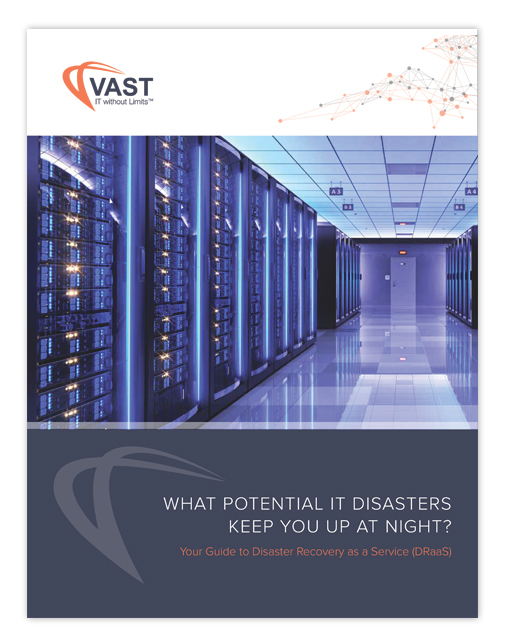Modern businesses rely heavily on their IT environment. Companies need reliable and consistent access to business-critical systems to support operations and provide customer service. Extended outages can devastate a company’s bottom line and cause long-term damage to its brand reputation.
Backups play a pivotal role in business continuity. Companies must have a comprehensive backup plan to protect their data and environment. Multiple on-premises and cloud backup solutions are available to address this need. Organizations can strengthen their business continuity posture by adopting a Cloud Backup-as-Service (CBaaS) solution for data protection.
Elements of an Effective Business Continuity Strategy
Organizations must develop and implement an effective business continuity strategy to protect their IT environments. A successful strategy addresses the technical and administrative aspects of maintaining business operations under suboptimal conditions. The approach requires more than simply implementing a backup and recovery solution.
A typical business continuity strategy is comprised of the following elements.
- Risk assessment – Companies should identify the threats and risks that may affect business operations. The threats include physical disasters such as fires, floods, or power outages. Decision-makers should also consider data breaches and data loss or corruption that impact an organization’s business-critical systems.
- Business impact analysis – Organizations must determine the IT systems and functionality required to maintain business operations. Production systems are typically given priority over test and development environments. Teams must prioritize the identified systems in the business continuity plan.
- Business continuity plan – The business continuity plan documents the steps required to maintain business operations after a disaster or data loss scenario. The plan should include a list of the systems that need to be recovered and procedures to perform the recoveries. Management should also develop a communication plan to keep employees and other stakeholders updated.
- Emergency and incident response plan – This plan identifies the personnel responsible for addressing the emergency and the initial steps they need to take to mitigate the disruption. The plan may also provide details regarding alternate locations and remote work technologies required to maintain business operations.
- Data backup and recovery solution – The organization’s data backup and recovery solution is often instrumental in recovering from a disaster. The solution must regularly create reliable backups of business-critical data. Backups need to be readily available for use in recovery procedures. Teams should develop disaster recovery plans that leverage the recovery functionality of the solution to restore business operations as quickly as possible.
- Training and testing – Companies must train all employees involved in the business continuity plan in their designated roles. Teams should test the plan regularly and make modifications to address issues identified in the recovery procedures.
- Review and update – Management must perform periodic reviews to ensure the strategy reflects environmental changes and evolving business requirements. The review should verify that the plan complies with regulatory standards, such as quickly restoring the availability of sensitive data resources.
Limitations of Traditional Backup and Recovery Solutions
Reliable backups are an essential part of a viable business continuity strategy. Valid backups are necessary to recover the IT environment efficiently. Ideally, the data required for the recovery is easily accessible to the appropriate teams and personnel. The type of backup solution a company adopts can dramatically affect the accessibility of these vital data resources.
Traditional backup solutions typically involve a dedicated, on-premises infrastructure. Backup media is created and stored onsite to be used for data recovery. Additional copies of the backups may be stored offsite for use in a disaster so recovery can be performed at an alternate location.
A traditional recovery solution has potential drawbacks when used for disaster recovery to ensure business continuity. Possible issues include:
- Time spent collecting and delivering the required backup media to the recovery site;
- Ensuring the necessary equipment and technical personnel are available at the site to perform the recovery;
- Losing or damaging essential backup media and putting the recovery at risk.
Benefits of Cloud Backup as a Service
Companies can avoid the limitations of traditional backup and recovery solutions by adopting CBaaS as an integral part of their business continuity strategy. CBaaS streamlines the backup and recovery of a company’s data resources. Organizations can experience the following benefits from a CBaaS solution.
- Businesses can eliminate the costs of implementing and supporting an on-premises backup infrastructure with CBaaS. A reliable internet connection is all they need to back up their data securely and efficiently. The cloud backup infrastructure is flexible and limitless, so it can easily address a growing company’s data protection needs.
- Companies can recover data to any location with an internet connection. The flexibility afforded by a CBaaS solution adds resiliency to a business continuity strategy. Teams can optimize the strategy by performing recovery operations in multiple alternate sites. A business can restore operational capabilities even during widespread physical disasters.
- Teams can quickly test recovery components of the business continuity plan with a CBaaS solution. Recovery processes do not require a dedicated alternate site, so they can be tested frequently to ensure they are optimized and ready when needed to address a disaster.
Organizations should strongly consider incorporating DRaaS into their business continuity strategy.
VAST’s Cloud Backup as a Service
VAST’s CBaaS solution is designed to allow companies of any size to protect their valuable data efficiently. The service can serve as the cornerstone of an effective business continuity strategy. Let’s look at the details of our CBaaS solution and see how it addresses your company’s business continuity requirements.
Our CBaaS offering is a fully managed backup solution for complex computing environments. It is built on Druva’s advanced data protection technology and can be tailored to align with your business requirements. Benefits of this solution include:
- Immutable backups to protect sensitive and regulated data;
- Fixed pricing for predictable budgeting;
- Eliminating the cost of maintaining a backup infrastructure.
The solution focuses on the following four areas of the modern IT infrastructure.
- Microsoft 365 and other software-as-a-service (SaaS) products;
- Public cloud environments;
- Hybrid and on-premises infrastructures;
- Enterprise endpoints for securely protecting remote resources.
Contact the data protection experts at VAST today and strengthen your business continuity strategy with a CBaaS solution.



